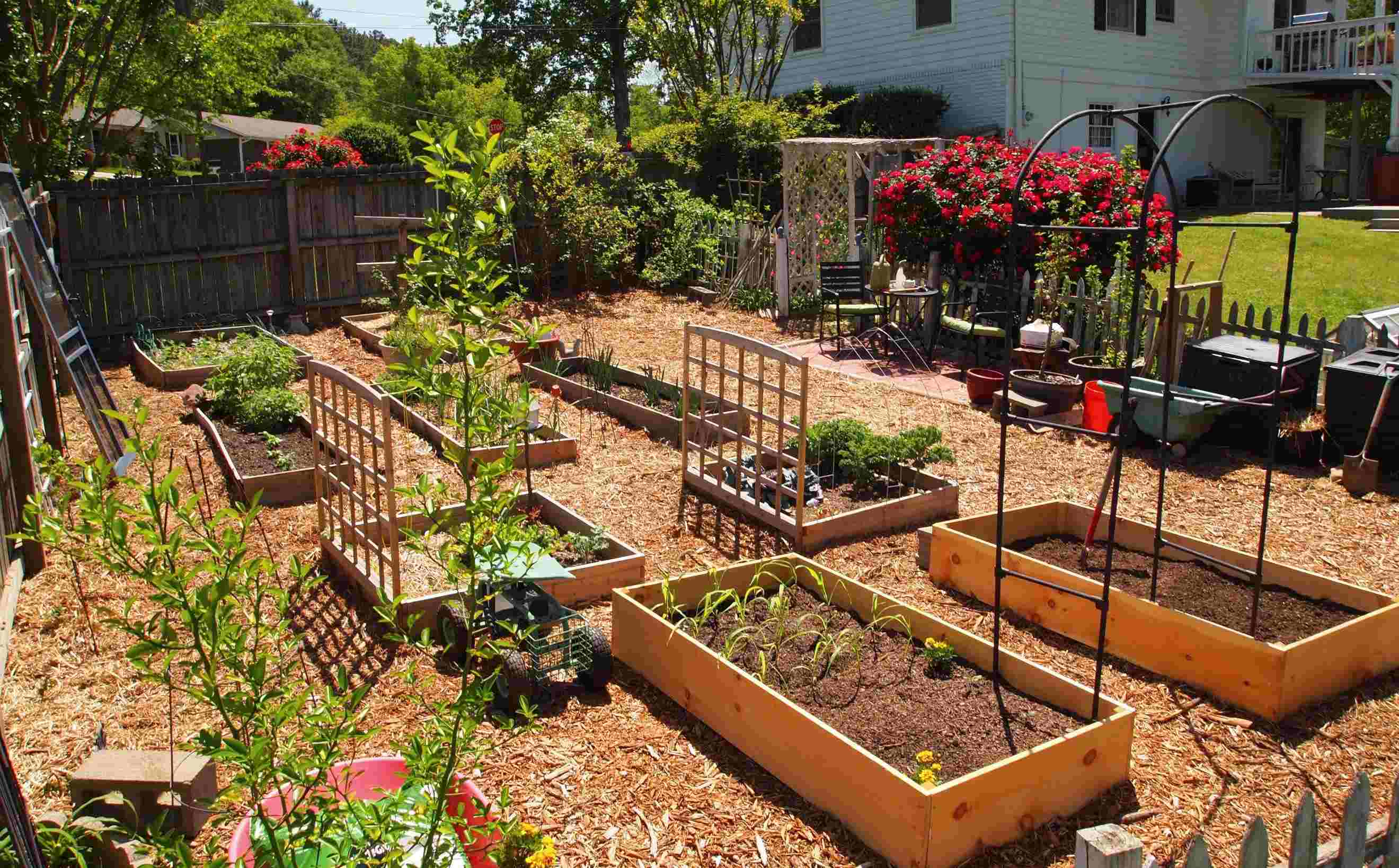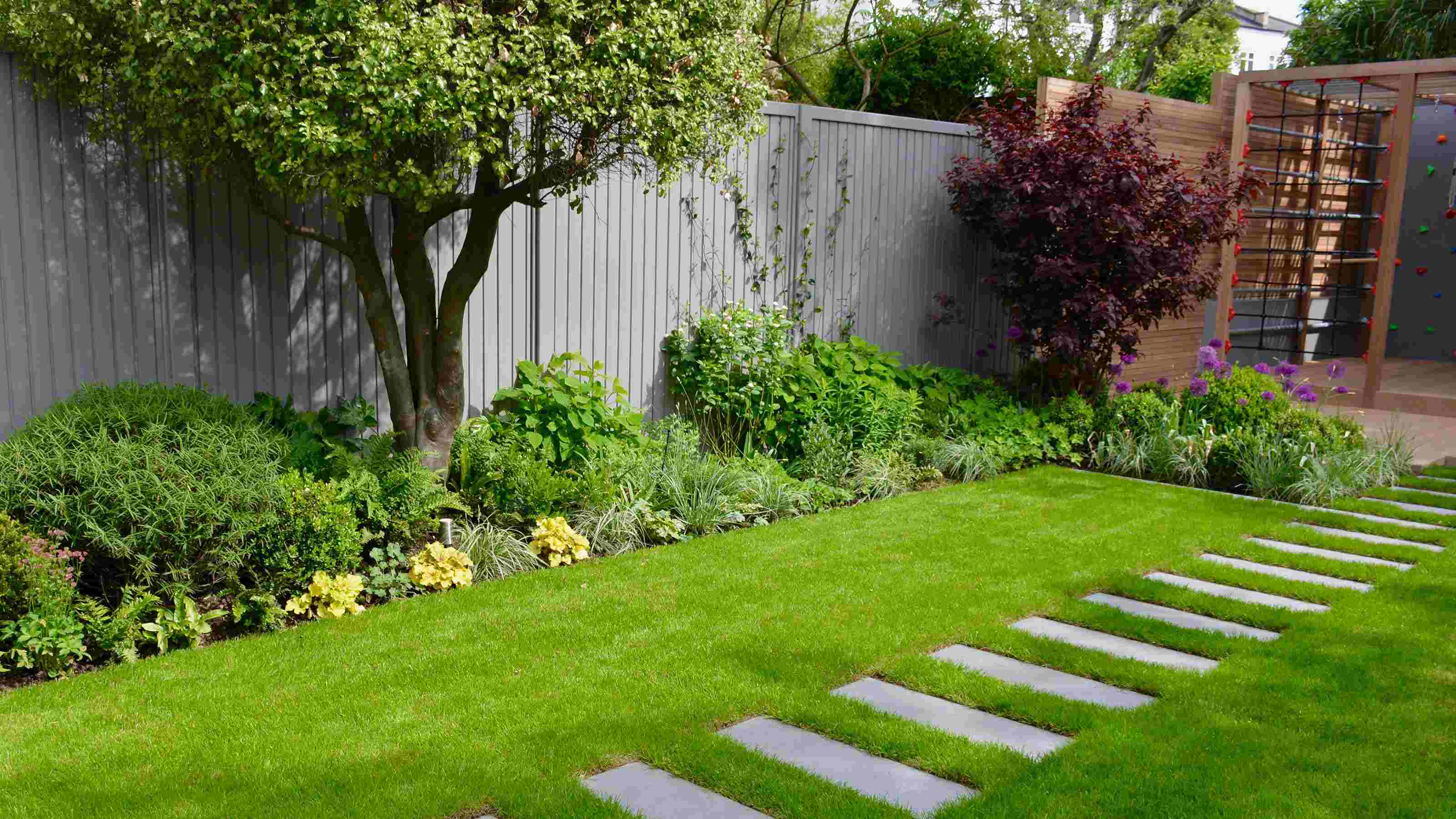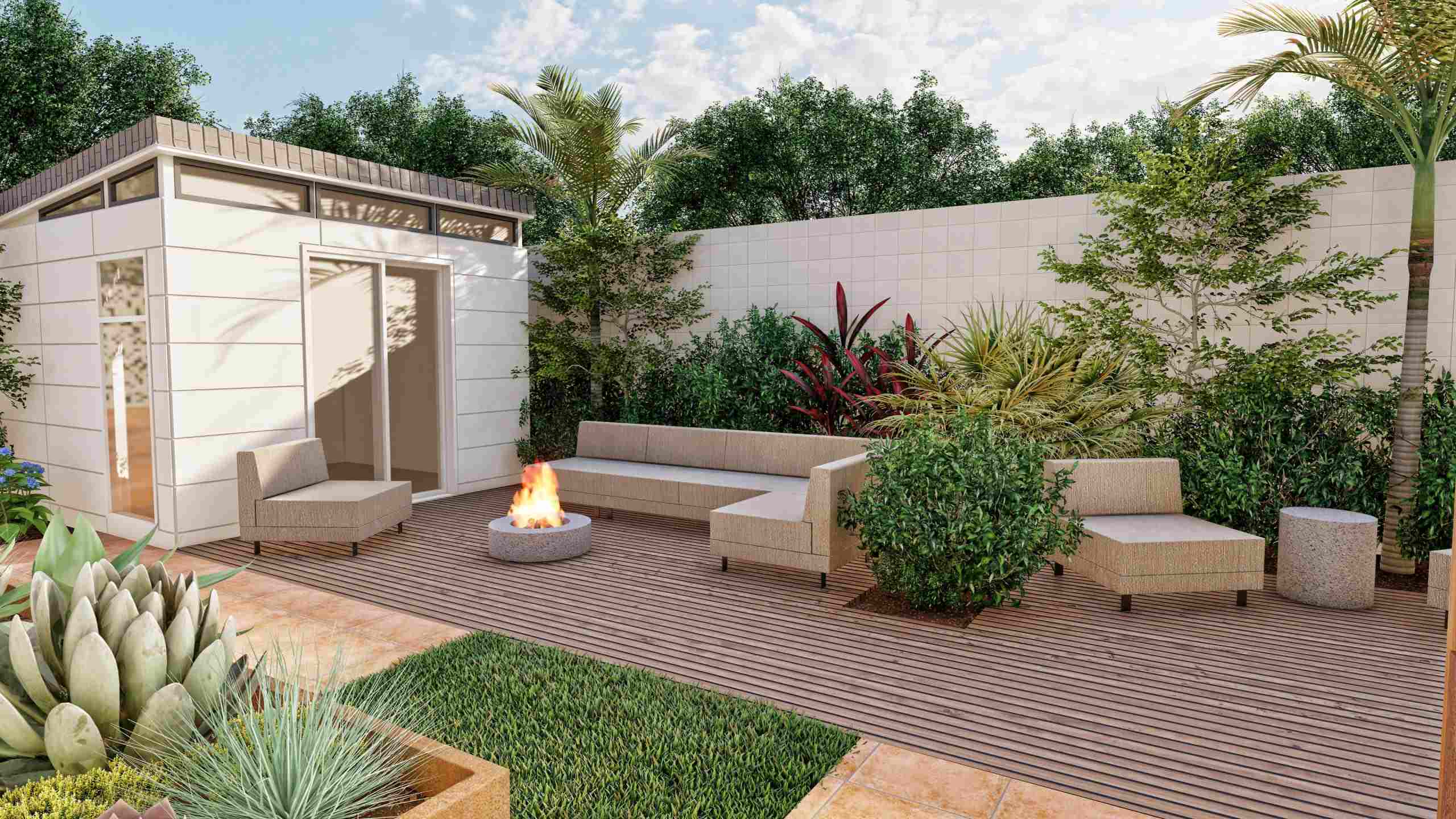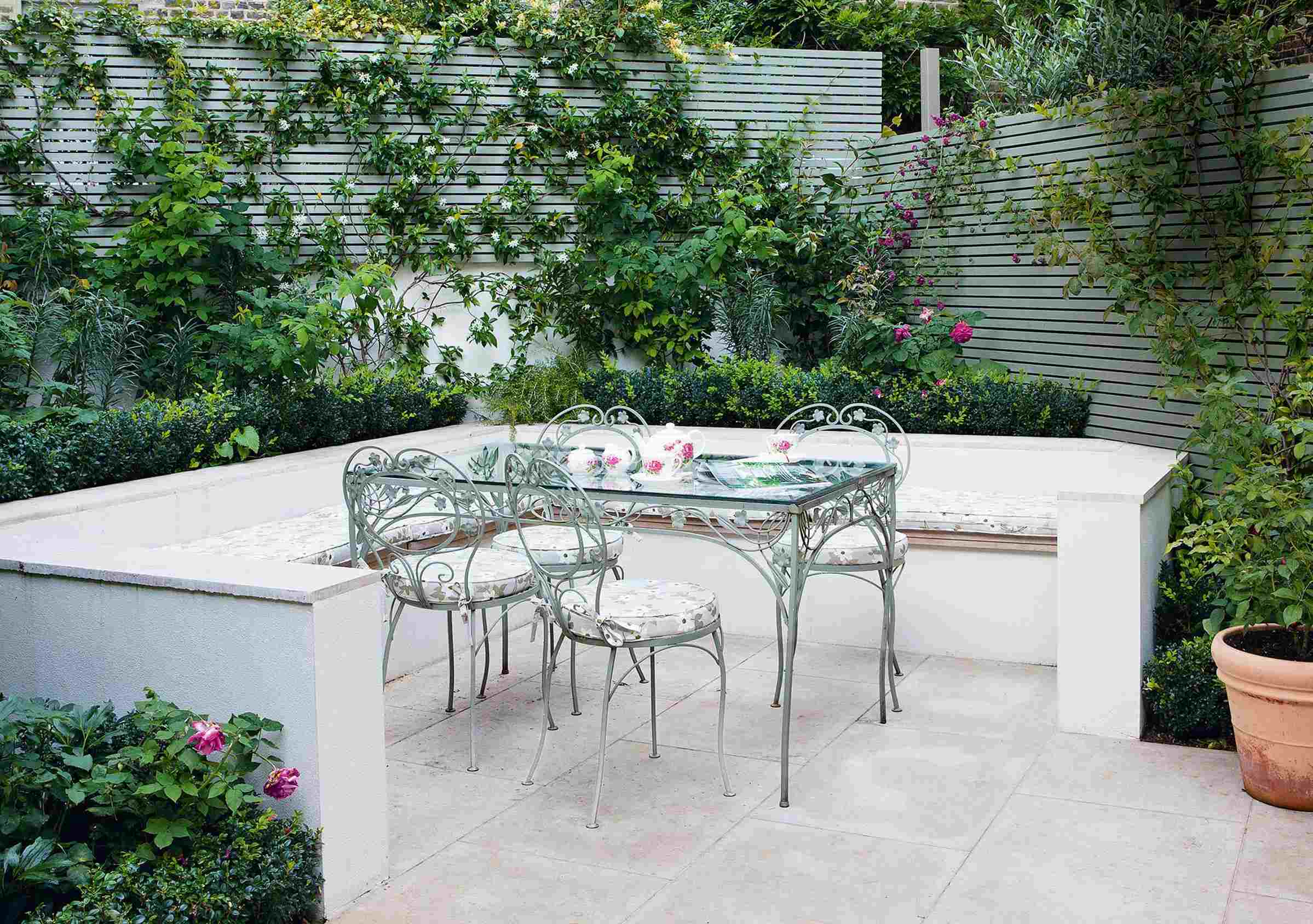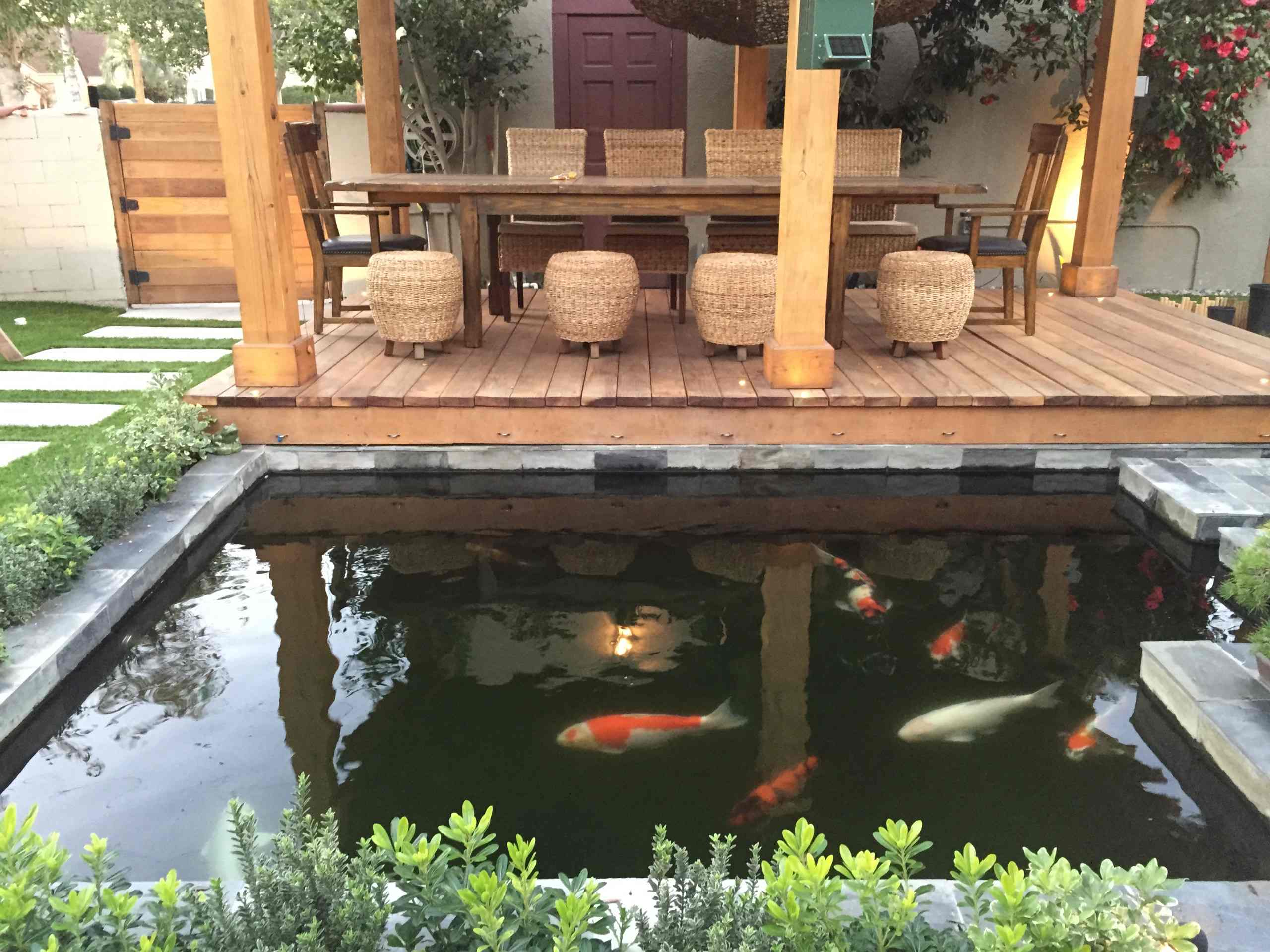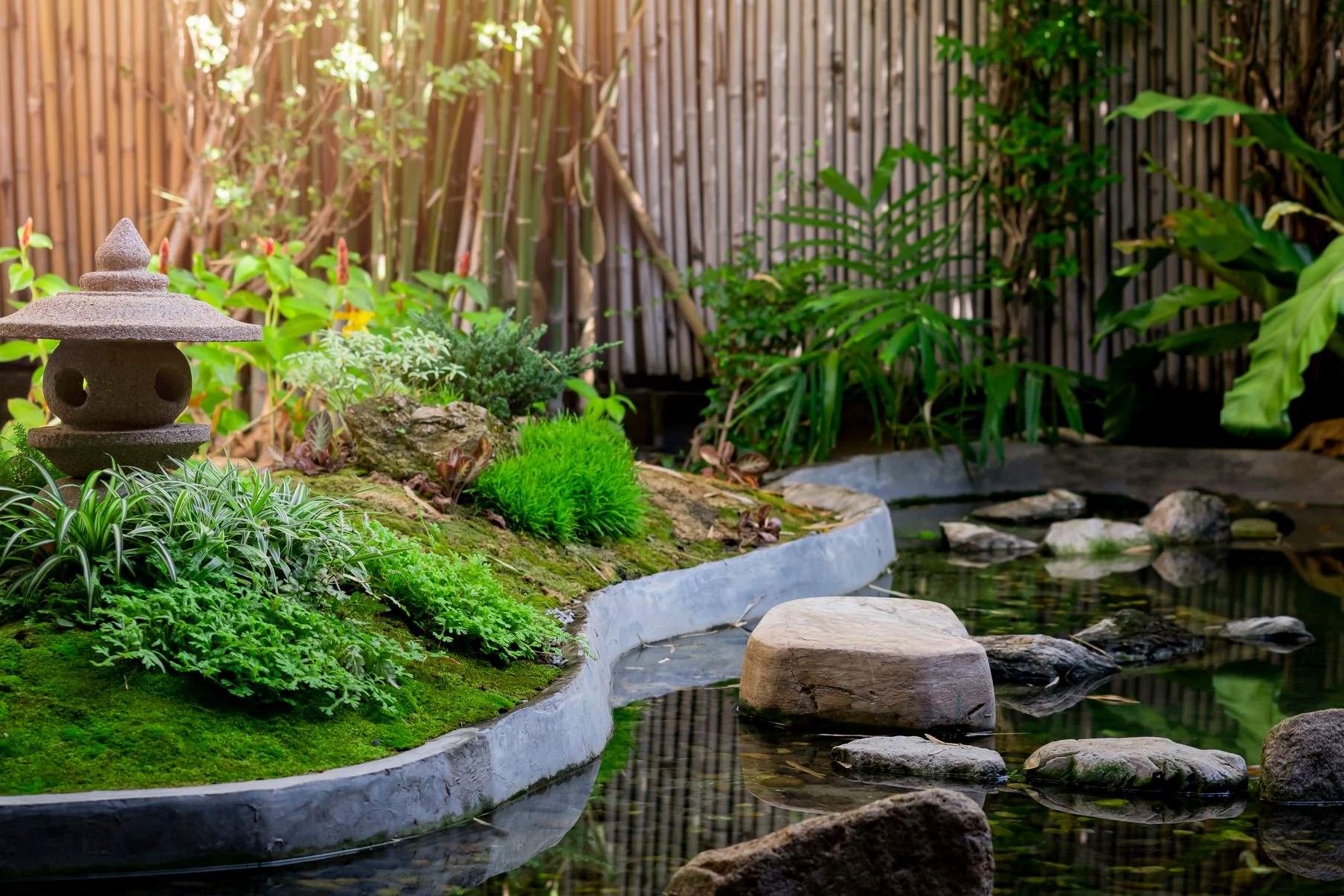Home>Gardening Basics>How To Make Drainage In Backyard
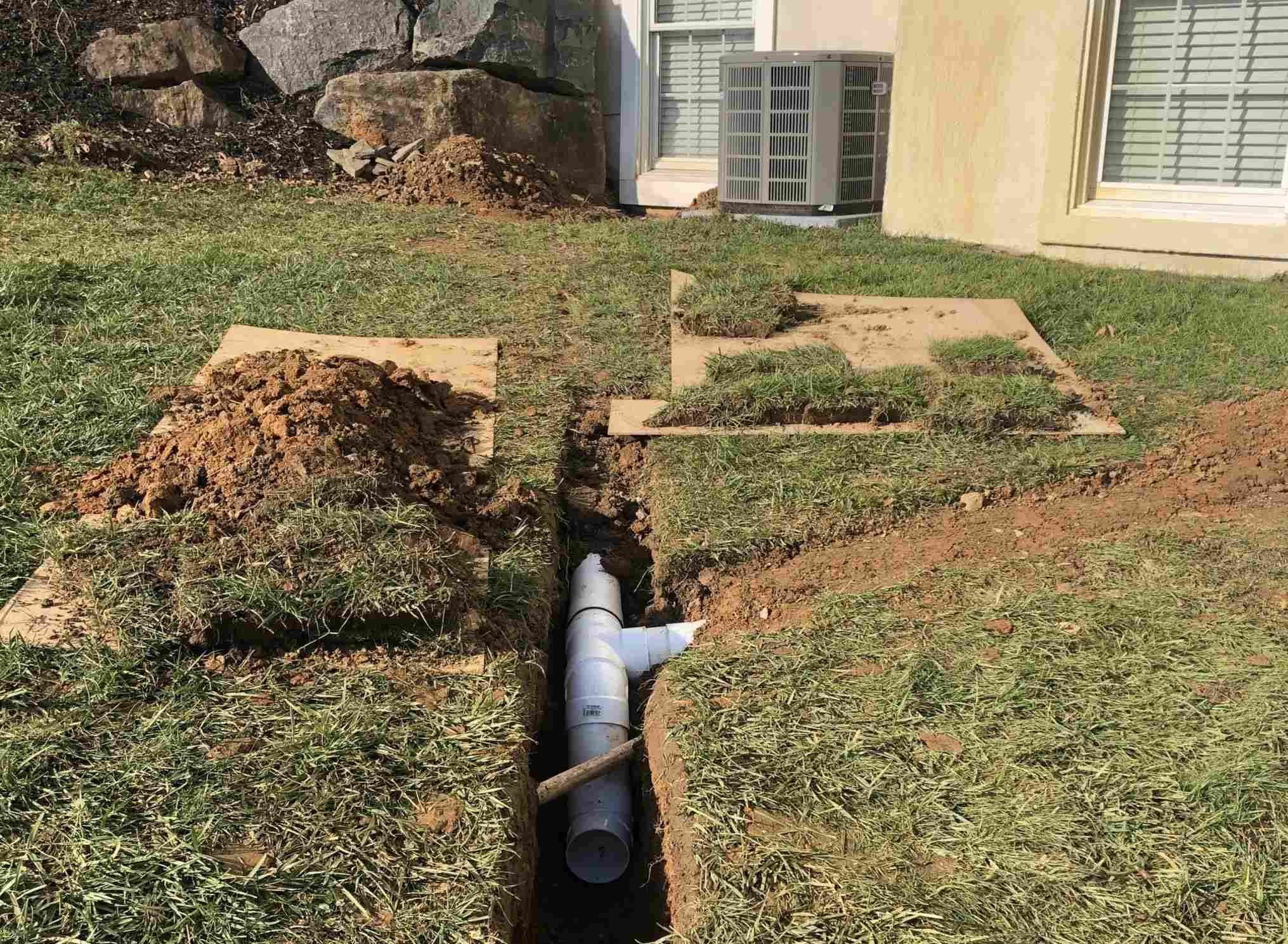

Gardening Basics
How To Make Drainage In Backyard
Published: August 5, 2023
Learn how to create proper drainage in your backyard by understanding the soil. Discover techniques and tips for successful landscaping projects.
(Many of the links in this article redirect to a specific reviewed product. Your purchase of these products through affiliate links helps to generate commission for Chicagolandgardening.com, at no extra cost. Learn more)
Table of Contents
Introduction
Welcome to the world of backyard drainage, where the health and vitality of your outdoor living space depends on proper water management. Whether you’re dealing with excessive rainfall, poor soil drainage, or water pooling in your yard, understanding how to create an effective drainage system is essential for maintaining the beauty and functionality of your outdoor space.
Excess water in your backyard can lead to a host of issues, including waterlogged soil, erosion, and the formation of stagnant pools. These problems not only pose a threat to the health of your plants and landscaping, but they can also create unsightly and potentially hazardous conditions for you and your family.
Assessing the drainage needs of your backyard is the first step in addressing these issues. By identifying problem areas and understanding the natural flow of water on your property, you can choose the right drainage system and take the necessary steps to ensure that water is effectively redirected away from your yard.
In this article, we will guide you through the process of creating a functional backyard drainage system. From assessing the drainage needs to installing drainage pipes and slope grading, we’ll cover all the essential steps to help you achieve optimal drainage and maintain a healthy, vibrant backyard.
But before we jump into the details, it’s important to note that creating an effective drainage system requires careful planning and consideration. Every yard is unique, and what works for one may not work for another. It’s crucial to understand the specific characteristics of your backyard and tailor your drainage solution accordingly.
Now, let’s dive into the world of backyard drainage and explore the steps you need to take to ensure the longevity and vitality of your outdoor space.
Assessing the Drainage Needs
Before implementing any drainage solution, it’s crucial to assess the specific drainage needs of your backyard. This will involve identifying problem areas and understanding how water naturally flows and collects on your property.
Start by observing your yard during rainfall or after irrigation. Note any areas where water accumulates or pools, as these are clear signs of poor drainage. Additionally, look for signs of erosion or water damage, such as exposed roots, uneven ground, or washed-out areas.
Next, consider the surrounding landscape and topography. Are there any slopes or low-lying areas that contribute to water pooling? Understanding the natural flow of water on your property will help determine the most effective drainage solutions.
If you’re unsure about the drainage needs of your yard, you can conduct a simple test. Dig a small hole in the problem area and fill it with water. Observe how quickly the water drains. If it takes more than 24 hours for the water to disappear, it’s a clear indication of poor drainage. On the other hand, if the water drains quickly within a few hours, the drainage may not be a significant issue in that particular area.
Once you have identified the problem areas and assessed the drainage needs, it’s time to choose the right drainage system. There are several options available, including French drains, gutter extensions, and dry wells. Each system has its unique advantages, and the choice will depend on the specific characteristics and needs of your backyard.
Remember, an effective drainage system is crucial for maintaining a healthy backyard. It ensures that excess water is efficiently redirected away from your yard, preventing waterlogging, erosion, and other potential issues. By taking the time to assess your drainage needs, you’ll be able to make informed decisions and create a tailored solution that will keep your backyard thriving.
Choosing the Right Drainage System
Once you have assessed the drainage needs of your backyard, the next step is to choose the right drainage system. There are several options available, each designed to address specific drainage issues. Understanding the characteristics and advantages of each system will help you make an informed decision.
One popular drainage system is the French drain. This system involves digging a trench and filling it with gravel and perforated pipes. The pipes collect and redirect water away from problem areas to prevent water buildup. French drains are especially effective in areas with clay or compacted soil, as they facilitate better water flow and prevent soil saturation.
Gutter extensions are another common choice for managing water runoff from roof gutters. By extending the downspouts away from the foundation of your home, gutter extensions help direct water away from your yard, preventing soil erosion and foundation damage. These extensions can be made from flexible materials or rigid pipes, depending on the specific needs of your landscape.
If your backyard experiences frequent water pooling, a dry well may be an ideal solution. A dry well is a large pit filled with gravel, which acts as a reservoir for excess water. It allows the water to slowly percolate into the ground, preventing surface runoff and soil erosion. Dry wells are often used in low-lying areas or where space is limited.
In some cases, a combination of drainage systems may be necessary to effectively manage water in your backyard. Mixing and matching systems can help address specific problem areas and create a comprehensive drainage solution.
When choosing a drainage system, consider factors such as the size of your yard, the severity of the drainage issue, and your budget. Consult with a professional if you’re unsure which system is best suited for your backyard. They can provide expert guidance and ensure that the chosen system meets your specific needs.
Remember, proper installation is crucial for the effectiveness of any drainage system. Ensure that the system is correctly installed, with pipes securely in place and trenches properly backfilled. Regular maintenance and inspection of the system will also help identify any potential issues and ensure long-term functionality.
By choosing the right drainage system for your backyard, you can effectively manage water runoff and prevent the damaging effects of poor drainage. Take the time to research and evaluate your options to create a solution that will keep your backyard dry, healthy, and thriving.
Digging the Trenches
Once you have identified the problem areas and chosen the appropriate drainage system, the next step is to start digging trenches. Trenches are an essential component of many drainage systems as they provide a pathway for water to flow away from your yard.
Before digging, it’s crucial to have a clear plan in mind. Mark the areas where the trenches will be located using stakes or spray paint. This will help ensure that the trenches are dug in the right location and follow the desired path.
Start by using a shovel or a trenching tool to break ground along the marked path. The width and depth of the trench will depend on the specific drainage system and the volume of water it needs to accommodate. Typically, trenches are around 6-12 inches wide and 12-24 inches deep.
As you dig, make sure to remove any debris or rocks that may obstruct the flow of water. It’s important to maintain a consistent slope in the trenches to ensure proper water drainage. Aim for a slope of at least 1/8 inch per foot to ensure efficient water flow.
When digging trenches, pay attention to any underground utilities or irrigation systems. Before digging, consult with a professional to mark the location of these systems and ensure that you avoid any potential damage.
It’s also important to consider the shape of the trenches. While straight trenches are common, you may need to shape the trenches to follow the natural contours of your yard. This will help facilitate water flow and prevent any potential blockages.
As you dig the trenches, periodically check the slope using a level or a string with a line level. This will help ensure that the trenches have the necessary gradient for effective water drainage.
Once the trenches are dug, inspect them for any signs of damage or irregularities. Smooth out the edges and remove any loose soil or debris. This will ensure a clean and well-prepared trench for the installation of the drainage system.
Digging trenches is a critical step in creating a functional drainage system. Proper planning, attention to detail, and adherence to safety precautions will contribute to the success of your drainage project. By creating well-constructed and properly sloped trenches, you are setting the foundation for efficient water flow and effective management of excess water in your backyard.
Installing Drainage Pipes
With the trenches in place, it’s time to install the drainage pipes. The pipes play a crucial role in collecting and redirecting water away from your yard, ensuring proper drainage and preventing water buildup.
Start by measuring and cutting the drainage pipes to the appropriate length. It’s important to carefully plan the placement of the pipes to ensure they effectively capture water from problem areas and direct it towards an exit point.
If you’re using a French drain system, lay the perforated drainage pipes along the bottom of the trench. Position the pipes with the perforations facing downwards to allow water to seep in. Connect the pipes using the appropriate fittings or couplers.
In some cases, you may need to install additional components such as catch basins or sump pumps. These elements help collect and remove excess water, especially in areas with high water flow or significant water buildup.
As you install the pipes, make sure they have a slight downward slope to facilitate water flow. A gradient of around 1/8 inch per foot is typically sufficient. Use a level or a string with a line level to ensure the pipes are properly sloped.
Once the pipes are in place, backfill the trench with gravel or coarse sand. This promotes better water drainage and helps prevent soil from clogging the pipes. Fill the trench gradually, compacting the backfill as you go to create a stable base for the pipes.
Inspect the pipes for any leaks or damage before proceeding. It’s important to ensure that all connections are tight and secure. If you detect any issues, address them promptly to prevent future complications.
In areas where there is a higher volume of water runoff or where the pipes need to cover a larger area, consider using a geotextile fabric. This fabric acts as a barrier, preventing soil and debris from clogging the pipes while allowing water to flow through freely.
Proper installation of the drainage pipes is crucial for the effectiveness of your drainage system. Take the time to carefully position and secure the pipes to ensure optimal water collection and redirection. By installing the pipes correctly, you’ll facilitate better water flow and maintain a well-drained and healthy backyard.
Backfilling the Trenches
After installing the drainage pipes, the next step is to backfill the trenches. Backfilling is the process of filling the excavated trenches with soil or other materials to provide support and stability to the drainage system.
Before backfilling, ensure that the drainage pipes are securely in place and free from any obstructions or damage. Inspect the pipes and fittings for any leaks or issues that may arise during the backfilling process.
The choice of backfill material depends on various factors, including the type of drainage system and the soil composition in your yard. Common materials used for backfilling include gravel, coarse sand, and a combination of topsoil and sand.
If you’re using a French drain system, it’s recommended to use gravel for backfilling. Fill the trench with the gravel, ensuring that it covers the drainage pipes evenly. The gravel promotes better water flow around the pipes and prevents soil from clogging them.
When backfilling, it’s important to do it in layers. Add the backfill material gradually, compacting it gently as you go. This helps create a stable and supportive base for the drainage pipes. Use a hand tamp or a mechanical compactor to compact the backfill material thoroughly.
Ensure that the backfilled soil slopes away from the foundation of your home or any other structures. This promotes proper water drainage and prevents any potential water accumulation near these areas.
Take caution not to over-compact the backfill material, as this can restrict water flow and impede drainage. Strike a balance between compactness and allowing sufficient space for water to move through the soil and reach the drainage system.
If you encounter any rocks or large debris while backfilling, remove them to avoid potential obstructions to the drainage system. This will ensure that water can freely flow through the pipes without encountering any blockages.
Once the trenches are backfilled, inspect the area for any irregularities or signs of settling. Make necessary adjustments by adding more backfill material if needed. The goal is to create a smooth and evenly graded surface.
Backfilling the trenches is a crucial step in completing your drainage system. It provides support and stability to the drainage pipes while ensuring that water is effectively channeled away from your yard. By following proper backfilling techniques, you’ll create a solid foundation for maintaining a well-drained outdoor space.
Grading and Sloping the Yard
Grading and sloping the yard is an integral part of creating an effective drainage system. Proper grading ensures that water flows away from your home and problem areas, preventing water buildup and potential damage. Here are the steps to follow when grading and sloping your yard:
1. Assess the existing grading: Evaluate the current slope and grade of your yard. Look for any areas where water tends to collect or pool. Identify low spots or areas with inadequate slope that may require adjustment.
2. Determine the desired slope: The ideal slope for your yard depends on the specific drainage needs and the characteristics of your property. A general guideline is to aim for a minimum slope of 1% (1 foot of drop for every 100 feet of distance). This provides adequate water runoff and prevents water stagnation.
3. Use a level or survey tool: To ensure accurate grading, use a level or a survey tool to measure the slope of the yard. This will help you determine if any adjustments are needed to achieve proper drainage.
4. Remove excess soil: If certain areas of the yard have too much soil or are built up higher than the desired slope, remove the excess soil. This can be done by digging or using machinery, depending on the extent of the grading required.
5. Distribute the soil evenly: Once the excess soil is removed, distribute the remaining soil evenly across the yard. This helps create a consistent and cohesive grading throughout the entire area.
6. Use a grading rake: Use a grading rake to smooth out bumps and level the soil. This helps ensure a uniform surface and proper water flow.
7. Compact the soil: After grading, compact the soil using a roller or a compacting machine. This helps stabilize the soil and prevents future settling or erosion issues.
8. Establish swales or contouring: If your yard has natural contours or low spots, create swales or contour the land to direct water along a desired path. Swales are shallow ditches that guide water away from problem areas, while contouring involves shaping the land to effectively manage water runoff.
9. Planting and vegetation: Consider the use of plants and vegetation to further enhance the effectiveness of your drainage system. Select plants that are suitable for the local climate and prefer moist or wet conditions. These plants can help absorb excess water and support the overall drainage process.
Proper grading and sloping of your yard are essential for effective water management. By ensuring that water flows away from your home and problem areas, you can prevent water accumulation, soil erosion, and other drainage issues. Take the time to carefully assess and adjust the grading of your yard to create a well-drained and functional outdoor space.
Directing Water Away from the Yard
After implementing a drainage system and grading your yard, the next step is to ensure that water is effectively directed away from your property. Directing water away from the yard helps prevent water infiltration, soil erosion, and potential damage to your home and landscaping. Here are some effective strategies to achieve proper water redirection:
1. Install downspout extensions: Extend your gutter downspouts to direct water away from the foundation of your home. Use flexible extensions or rigid pipes to ensure that water is discharged at least 6 feet away from the house. This prevents water from seeping into the foundation and causing moisture-related issues.
2. Create natural drainage paths: Observe how water naturally flows in your yard and create pathways that guide the water away from problem areas. Use the existing topography and swales (shallow ditches) to channel water toward desired exit points such as storm drains or nearby drainage systems.
3. Build berms: Construct raised berms or mini hills along the edges of your yard to help divert water away from specific areas. Berms act as barriers to prevent water from flowing towards vulnerable spots and encourage water to follow a desired path.
4. Design landscape features: Incorporate landscape features such as dry creek beds or rock gardens to redirect water flow and add aesthetic appeal to your yard. These features help manage water runoff by creating designated channels and absorption areas.
5. Install catch basins: Consider installing catch basins in areas where water tends to accumulate, such as low spots or near downspout exits. Catch basins collect and store excess water, preventing it from causing pooling or flooding. They can be connected to drainage pipes to ensure proper water flow.
6. Maintain vegetation: Planting trees, shrubs, and other vegetation in strategic locations can help absorb excess water and reduce runoff. Choose plants that are well-suited to your region’s climate and soil conditions. Native plants are often a great choice as they require less maintenance and have adapted to local environmental conditions.
7. Regularly inspect and clear drainage pathways: Ensure that your drainage system, including gutters, downspouts, and pipes, is free of debris and obstruction. Periodically clean and remove leaves, twigs, or other debris that can hinder the flow of water. This maintenance will help maintain the functionality of your drainage system and prevent water backup.
8. Consider professional help: For complex or extensive drainage issues, it may be beneficial to consult with a professional landscaper or drainage specialist. They can assess your property, recommend appropriate solutions, and ensure proper implementation to effectively direct water away from your yard.
Remember, the goal is to ensure that water is directed away from your yard to avoid potential damage and create a well-drained outdoor space. By implementing these strategies, you can effectively manage water runoff and protect the integrity of your home and landscaping.
Maintaining the Drainage System
Once you have implemented a drainage system in your yard, it is important to maintain it regularly to ensure its effectiveness and longevity. Regular maintenance helps prevent clogs, blockages, and other issues that can compromise the efficiency of the system. Here are some key maintenance tasks to keep your drainage system in optimal condition:
1. Clear debris: Regularly inspect and remove any debris, such as leaves, twigs, or sediment, from the drainage system. Check gutters, downspouts, catch basins, and any other components to ensure they are clear and free-flowing. Blockages can prevent water from draining properly and may cause backups or flooding.
2. Unclog or flush the pipes: If you notice slow drainage or standing water in your yard, it may indicate a blockage in the pipes. Use a plumbing snake or a high-pressure water hose to clear any obstructions. By maintaining free-flowing pipes, you can prevent water from overflowing and causing damage to your yard and landscaping.
3. Inspect the drainage system after heavy rainfall: After heavy rainstorms, inspect your drainage system for any signs of damage, erosion, or leaks. Check for any soil collapse in the trenches or any issues with the pipes and connections. Address any issues promptly to prevent further damage to your drainage system.
4. Maintain proper grading: Over time, the yard’s grading may shift or settle, affecting the effectiveness of the drainage system. Regularly inspect and adjust the grading as needed to ensure proper water flow. Add or redistribute soil to maintain the desired slope and prevent water from pooling or stagnating.
5. Trim vegetation: Trim back any plants or vegetation that may obstruct the path of water flow. Overgrown branches or foliage can impede proper drainage and lead to blockages. Keep an eye out for any invasive plants or roots that may invade and potentially damage your drainage system.
6. Ensure proper downspout extensions: Check that your downspout extensions are still properly positioned and directing water away from your home and yard. Confirm that the extensions have not shifted, become loose, or detached, as this can result in water pooling near your foundation.
7. Address surface water and runoff: Take measures to manage surface water and runoff effectively. Use features such as swales, French drains, or dry creek beds to redirect and capture water in strategic locations. Regularly clear these features of any debris to ensure unobstructed water flow.
8. Consult professionals when necessary: If you encounter complex issues or concerns with your drainage system, it is advisable to seek professional help. A landscaping or drainage specialist can assess, troubleshoot, and provide guidance on maintaining and improving the functionality of your drainage system.
By maintaining your drainage system, you can prevent costly repairs, minimize water damage, and ensure that your yard remains well-drained and healthy. Regular upkeep contributes to the sustained efficiency of the system and helps safeguard your home and landscaping from the adverse effects of poor drainage.
Conclusion
Creating and maintaining an effective drainage system is vital for the health and functionality of your yard. Proper water management can prevent issues such as waterlogging, soil erosion, and damage to your home and landscaping. By following the steps outlined in this article, you can ensure that your yard remains well-drained and thriving.
Assessing the drainage needs of your backyard is the first crucial step. Identifying problem areas and understanding the natural flow of water will guide you in choosing the right drainage system. Whether it’s a French drain, gutter extensions, or dry wells, selecting the appropriate system for your specific needs is key.
Once you’ve chosen the drainage system, it’s time to dig the trenches and install the drainage pipes. Careful trenching and proper pipe placement will create a solid foundation for efficient water flow. Backfilling the trenches with suitable materials helps support the pipes and maintains a stable structure.
Grading and sloping the yard ensures that water is directed away from your property. Adequate grading, along with features like berms and swales, helps prevent water pooling and promotes proper water runoff. By directing water away from the yard, you can safeguard against water-related damages.
Regular maintenance of the drainage system is essential for its longevity and effectiveness. Clearing debris, unclogging pipes, and inspecting the system after heavy rainfall will help identify and address any issues promptly. Additionally, maintaining proper grading, trimming vegetation, and ensuring downspout extensions are in place contribute to optimal water management.
Remember, when it comes to drainage systems, every yard is unique. Consider consulting with professionals if you encounter complex drainage issues or require expert advice. Their expertise can guide you in making informed decisions and implementing suitable solutions.
By implementing a comprehensive and well-maintained drainage system, you can enjoy a beautiful, functional yard that is resistant to the challenges of excess water. So, take the necessary steps to address your yard’s drainage needs and create a space where your plants can thrive and your outdoor activities are not hindered by water-related problems.
